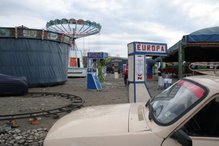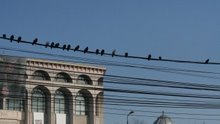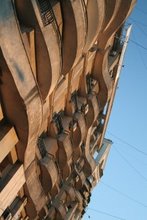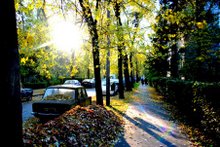

An omnivorous domesticated hoofed mammal with sparse bristly hair and a flat snout for rooting in the soil, kept for its meat. Here, pretty much every household has at least one pig, fattened with maize, wheat and general-leftover broth for about a year. Note that industrial fattening takes about 3 months now, and new orientations of taste with health concerns have definitely changed how pigs should be in other regions of Europe (and even in the big farms here, e.g. maximum of 12% fat), those bred in individual households should have a proportion of at least 40% fat. They should not lack ‘sunca’, the subcutaneous fat that will be turned into ‘untura’ (Lux: Schmalz – is there a special word in English?… I am tempted to say ‘blubber’ but I am sure that’s only for sea mammals’ fat…). Over a thousand pigs will be ‘cut’ from now until Christmas in the village. The black market in a neighbouring town is flourishing in this period of the year, unhampered by a smiling vet inspector (encountered in a different part of the official part of the market) who probably gets his own Christmas feast-pig from there. You can get pigs quite cheaply there (about €90 for a carcass with 120 kg meat, dead weight). There are all kinds of colourful pigs there, because people here have old breeds, not the ‘modern’ hybrids recommended/prescribed for industrial farming. I like colourful pigs. There was one black pig with a lot of hair on the market screaming as if it was being slaughtered already, because someone had tied it with its hind leg to the back of the truck, and it really did not like that, and wanted to escape. The vet inspector used to go and threaten with fines, in the summer, making the market dissociate at once in a cloudy moment of dust and noise, everyone getting their pigs in the car or horse-wagons and taking off. The man probably decided probably it was to no avail, given that every Sunday morning, the market was recreated under his nose.
Generally the issue is not (yet?) about whether raising a pig is profitable. It has become a lot more difficult lately to give your pig away, but it is still possible. Prices have hit rock bottom. If EU standards will be enforced, it will be more difficult to keep pigs in the backyard. For now, people know that no money is to be made in the pig business for small producers, but they are still holding on to their eating practices, and what it means to have a good household.
People here say that they should be killed on Ignatius day on the 20th December, but this is not respected in the region. The cutting of the pig is an important event, uniting families, neighbours, friends and attracting guests into the courtyards. I was told that from now on I would hear screaming pigs every morning. The pigs are slaughtered the traditional way. Even though people are vaguely aware of the (considered, and so-called Occidental) EU prescription to ‘anaesthetize’ pigs (through electroshock, shot…) before cutting their throat, they do not put this into practice. The pig is cut through an incision to the throat, which immobilises it immediately, but which kills very slowly. The pig is transported to a makeshift table, usually with a ladder. When it is dead, it is scorched black with a massive burner, removing the hair, and the outside of the hooves. The pig is washed, cleaned, and its head cut off. Then the actual cutting into pieces begins, and it takes some skill to do this properly. The times I have witness this event, a lot of discussion was going into various, and differing opinions of expertise on how to cut, where, when, and what. The carcass steams in the cold December air. Despite variations there is a rough prescribed order of cutting, and at this time, pieces of ‘sorici’, pig skin, are offered to guests and participants, along with salt and coffee. The cutting up proceeds from the outside to the inside, and the guts are dealt with lastly. The pig needs to be turned from being on its side first, to sitting on its belly. Every bit is used (apart from the gall bladder and the bladder), including the bones. After the cutting, more work awaits, because most people do not have freezers! Preservation methods include the ‘untura’ that I mentioned. Much of the meat is smoked, but not entire hindquarters, as is done in North-Western Europe. The meat is cut into manageable pieces and smoked with a slow woodchip fire in a small room. The organs and lower quality pieces are minced and made into ‘toba’ (a kind of pate) and ‘carnatoi’ (a kind of sausage). Pofta buna!











